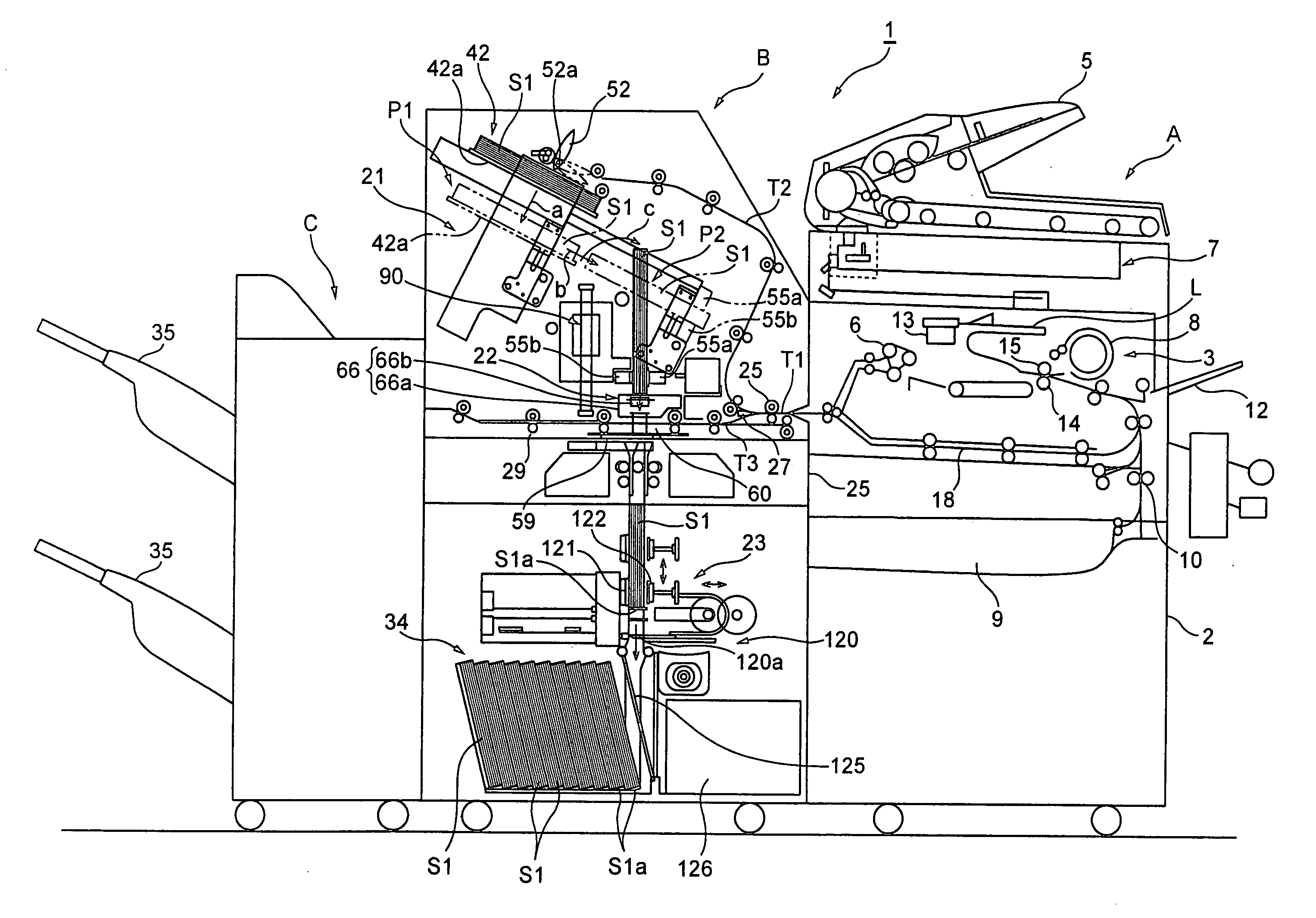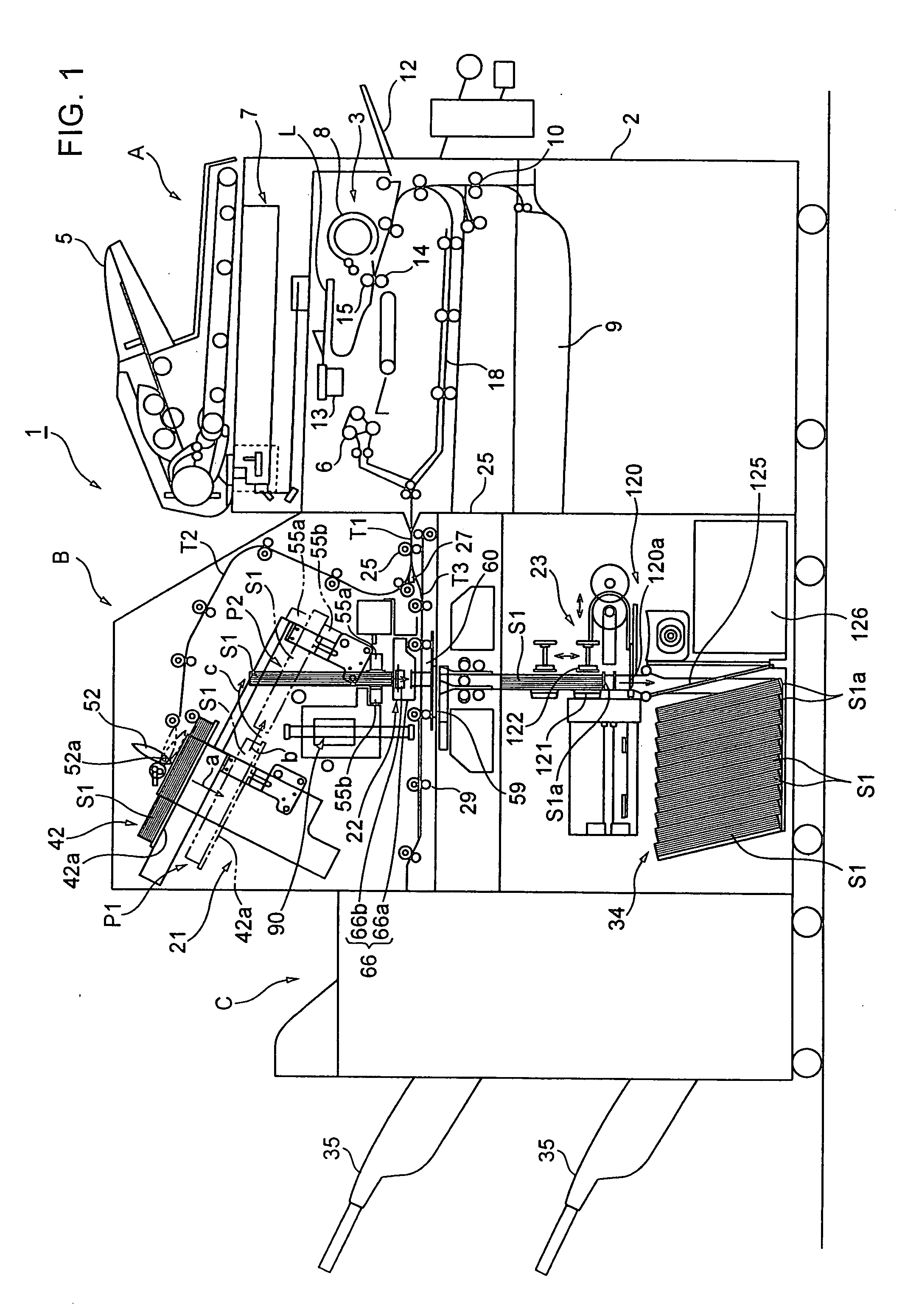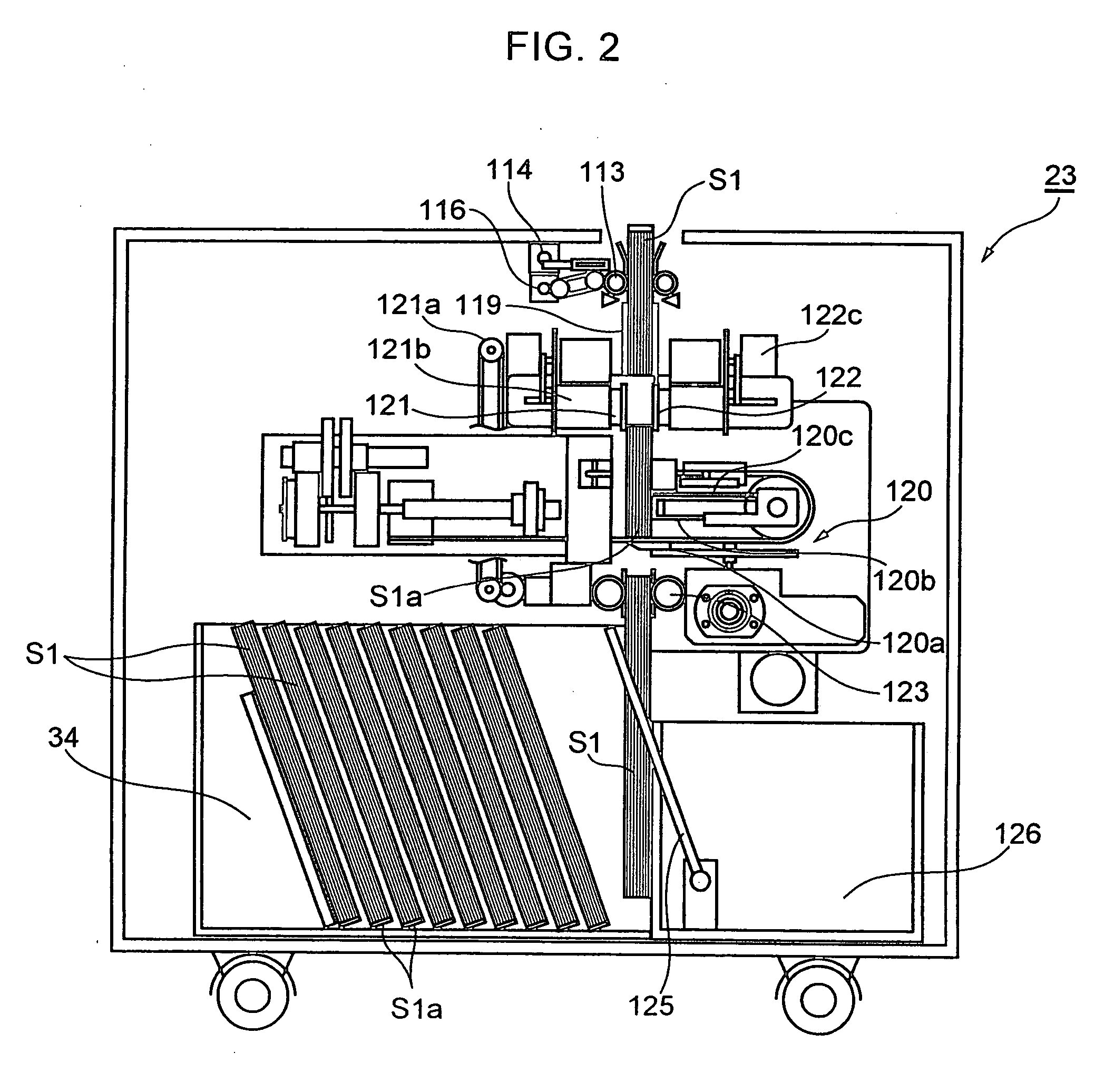Image formation processing system
a processing system and image technology, applied in electrographic process, instruments, transportation and packaging, etc., can solve the problems of limiting the number of sheets, requiring relatively short time, and not being able to convey the sheet bundle to downstream portions, so as to reduce the risk of occurrence, and prolong the processing time
- Summary
- Abstract
- Description
- Claims
- Application Information
AI Technical Summary
Benefits of technology
Problems solved by technology
Method used
Image
Examples
Embodiment Construction
[0029] Embodiments of the present invention will specifically be described below with reference to accompanying drawings
[0030]FIG. 1 shows a bookbinding formation processing system 1 according to one embodiment of the invention provided with a copy machine A (sheet supplying means), a bookbinding apparatus (bookbinding section) B disposed downstream of the copy machine A in sheet transport, and a post-processing apparatus (post-processing portion) C disposed downstream of the bookbinding apparatus B in sheet transport which constitute an image formation processing system according to the invention. The bookbinding apparatus B receives a plurality of sheets with images transferred thereto from the copy machine A, gathers the received sheets in the shape of a bundle to form a sheet bundle, and binds the sheet bundle. The post-processing apparatus C has a discharge tray 35, receives a plurality of sheets with images transferred thereto from the copy machine A via the bookbinding appar...
PUM
 Login to View More
Login to View More Abstract
Description
Claims
Application Information
 Login to View More
Login to View More - R&D
- Intellectual Property
- Life Sciences
- Materials
- Tech Scout
- Unparalleled Data Quality
- Higher Quality Content
- 60% Fewer Hallucinations
Browse by: Latest US Patents, China's latest patents, Technical Efficacy Thesaurus, Application Domain, Technology Topic, Popular Technical Reports.
© 2025 PatSnap. All rights reserved.Legal|Privacy policy|Modern Slavery Act Transparency Statement|Sitemap|About US| Contact US: help@patsnap.com



